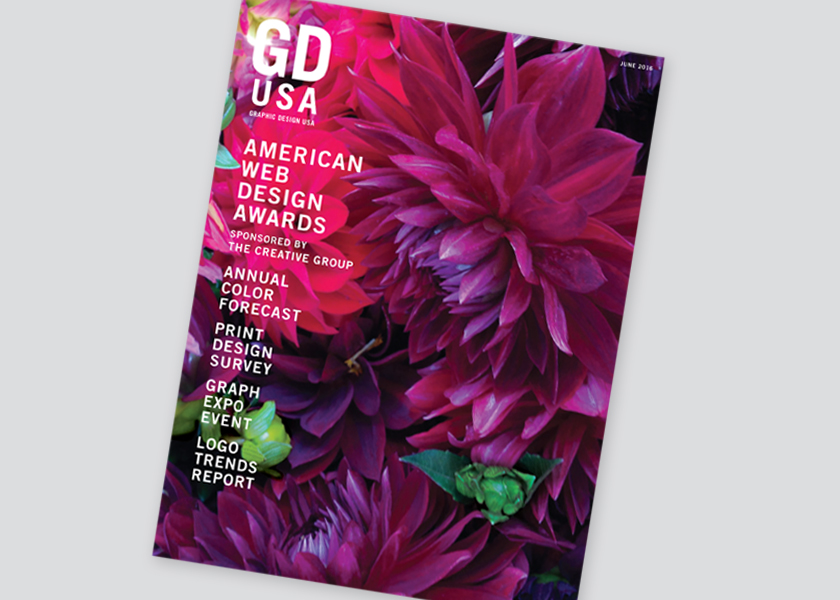Gordon Kaye has long been a supporter of and friend to Visual Connections. Finally got the busy man to be interviewed by Michael Masterson. This week, Part 1:
Gordon Kaye is editor and publisher of Graphic Design USA (GDUSA) magazine. He joined GDUSA in 1990 after a first career as communications attorney for a private law firm and then for the NBC Television Network where assignments included NBC News and Saturday Night Live. He received a B.A. from Hamilton College, and a joint degree in Law and Public Policy from Princeton University and Columbia Law School. He lives in Manhattan with his wife Susan, an art dealer turned reading specialist teacher. He has two grown daughters.

Michael Masterson: You were an attorney working for NBC handling intellectual property and regulatory issues. What led you from that to publishing?
Gordon Kaye: It is less a mystery than a love story. Yes, I had an interesting law career; first working for a large Wall Street law firm representing publishing and advertising clients. Then I moved in-house at NBC, the television network, practicing media, communications and entertainment law, as well as appearing on the set at 30 Rock to vet Saturday Night Live for potential legal problems. On paper (and at cocktail parties) my legal career looked pretty good. But here’s the rub. Starting in the early 1950s, my father worked at or owned various design, printing and ad industry magazines. Even as a young child, I came to love the feel and smell of print, its beauty and power. And though my father was not a designer, nor am I, we both shared a respect—make that fascination—for the ability of graphic artists to tell a story, sell a product, advance an idea. I never got over that feeling, and most days as a lawyer I fantasized about being a publisher. On the other hand, participating in a small family business is fraught with problems, and so I pursued my own career. Then my dad’s ventures hit hard times; by 1990 his business was essentially a shell. I jumped in to try and turn things around—maybe for a year or two, with no particular skills, just a passion for print. Luckily, passion—and lots of sweat—has been enough. Nearly a quarter century later, I wake up every morning anxious to get to work because publishing is fun, challenging, stimulating, meaningful. How many lawyers do you know who feel that way?
Michael: Graphic Design USA (GDUSA) has been around for 50 years. Can you talk a little about the changes in the magazine and publishing industry since you took the reins in 1990?
Gordon: Some of the changes are obvious, most particularly the transition from analog to digital production in type, film and layout. The more fundamental change is the role that a “trade magazine” plays. We were once the gatekeepers through which information flowed to, from and among the community, and to and from vendors. That gave us a lot of influence. Today, we are only one of many ways that people and companies and products and services can connect. That has serious ramifications on the editorial content we need to provide to remain relevant, and it has serious economic implications that all magazines are grappling with. What is your reason-to-be and what do you bring to the table? In that sense, all magazines have to ask those questions.
Michael: What do you see as the direction for GDUSA going forward in the next five years to stay relevant and competitive?
Gordon: These days, as much as I believe in print, no magazine can stand alone; our company lives because we also deliver information and have income streams from our website which is newly redesigned and which I love, from e-newsletters, blogs, sponsored content, several design contests, a digital flipbook edition, and other activities. Integrating print with digital media is absolutely necessary, and the real challenge is to figure out what works on the digital side and what can be monetized so that you can sustain the business. No one, not even the big guns like The New York Times, has fully figured this out. I have not, but hope springs eternal and the joke/mantra in our office is “Last Magazine Standing.”
At the same time – at the risk of being boring and repetitive – the print version is still the brand; it gives us the gravitas and provides the authenticity. I am investing more in design and production elements because the brand matters, and the experience of receiving GDUSA had better be special and memorable. While many publications are shrinking or stopping, we are generating lots more pages, on heavier paper stock, with better design than ever. I have no deep pockets and no secret sauce. I simply start from the fundamental belief that people still love print for its classic strengths—touch, feel, permanence, portability—and that a magazine can stand out from the digital noise IF it delivers relevant content and high production values.

Next week, Part 2!
